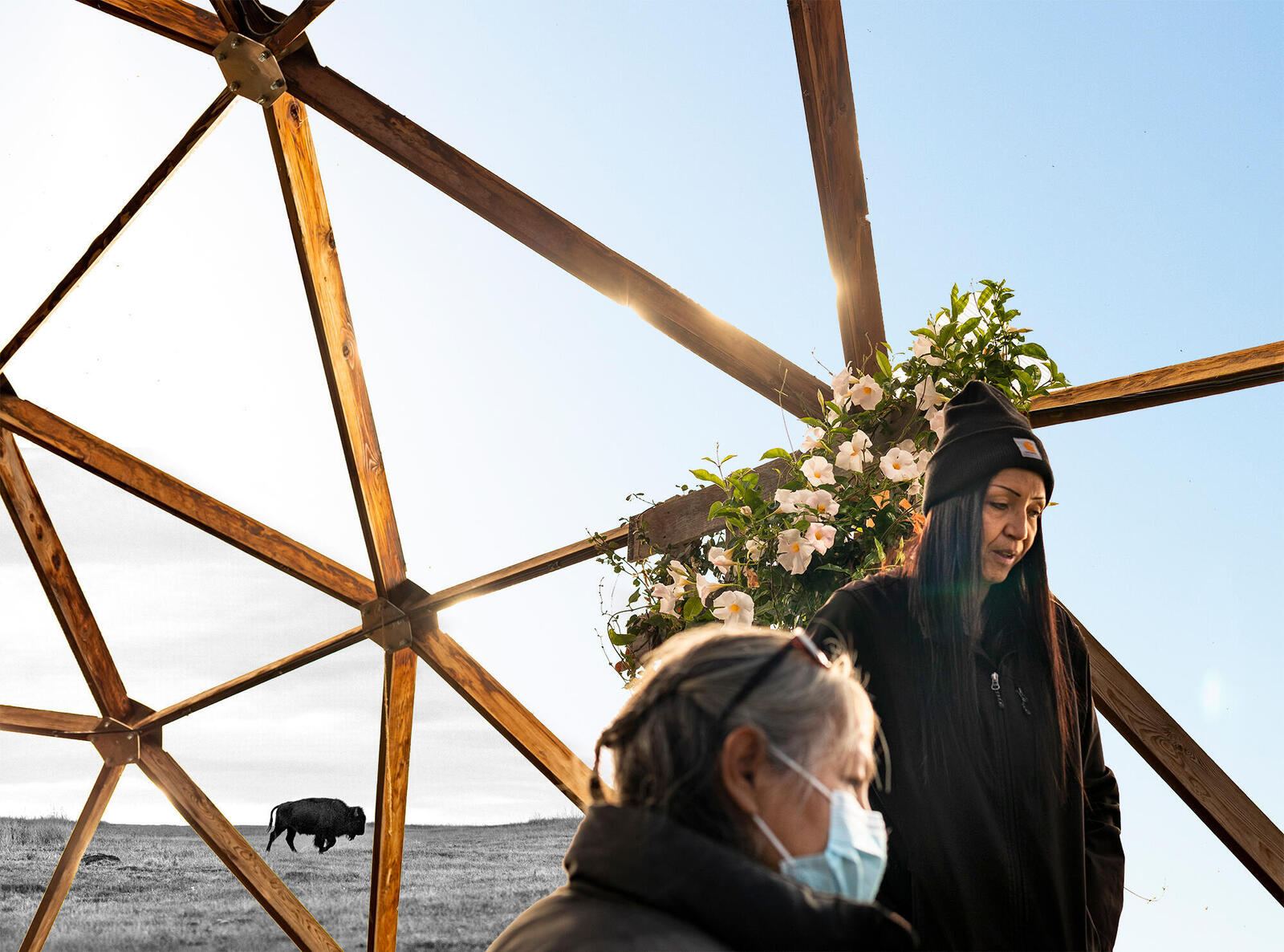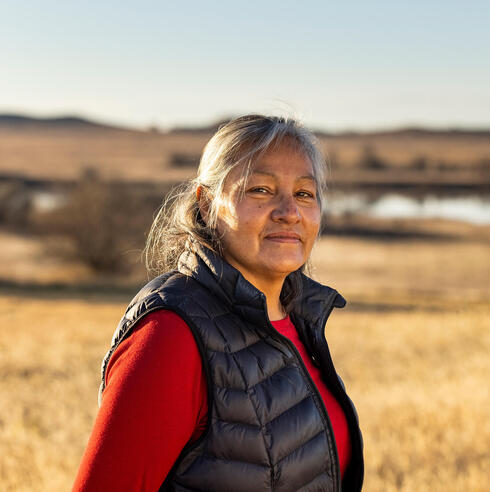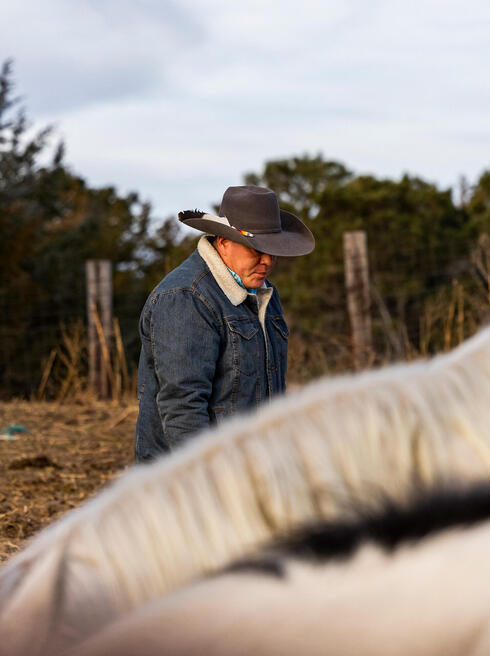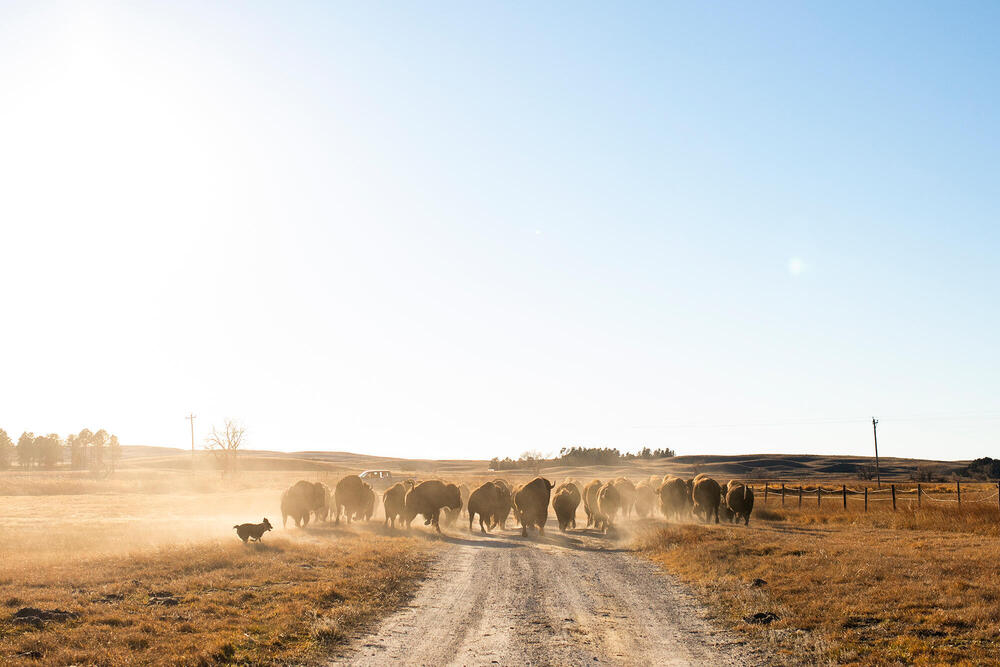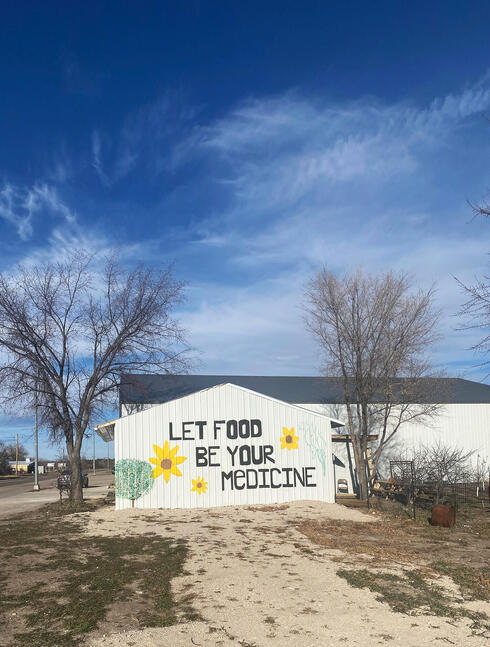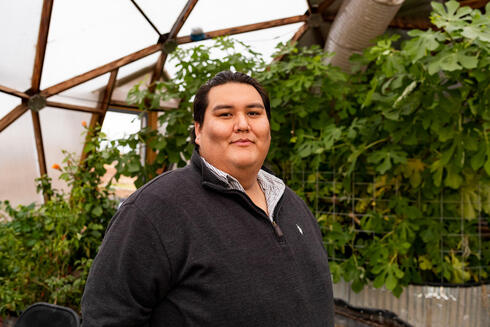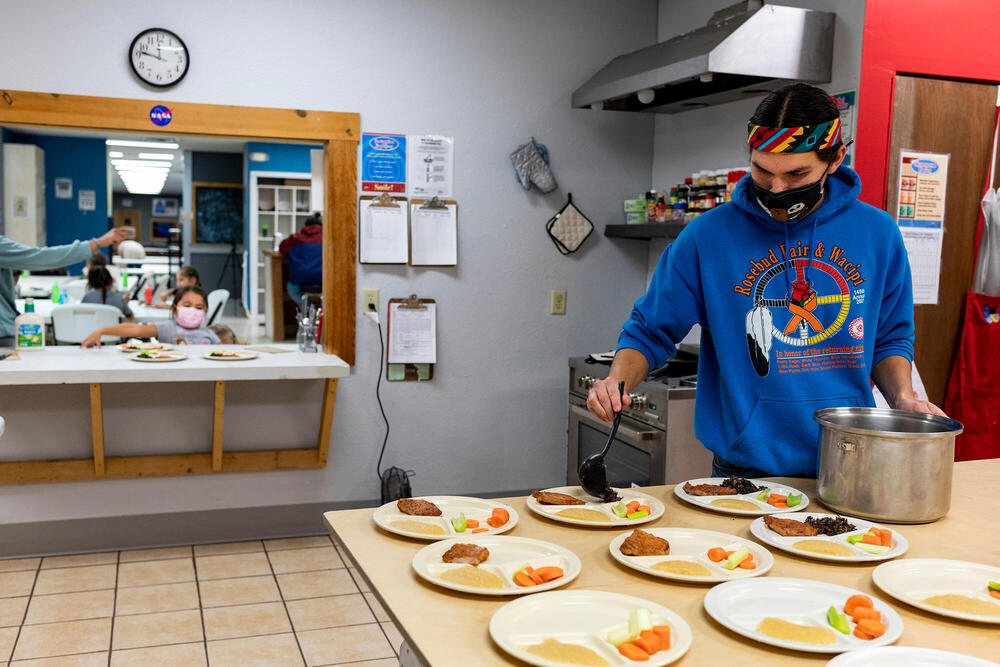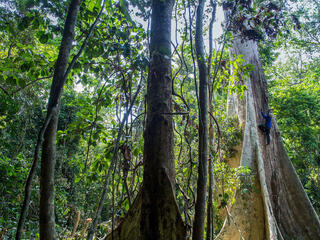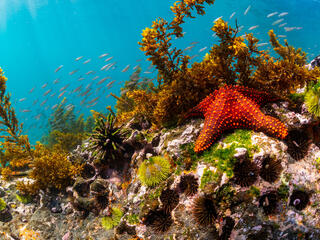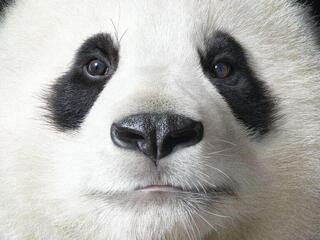On a bright, brisk morning, dew clings to Rosebud’s fields as Michelle Haukaas, a willowy figure sporting a black beanie, strides into a geodesic-domed greenhouse. Upon entering, she points to the main attraction: a towering banana tree, its leaves fanned out toward the sunlight.
“This is probably the most surprising thing we’ve grown. It was only supposed to be 20 feet tall, but after just six months it’s already touching the roof,” she laughs.
Closer to the ground, a chaotic jumble of plants grows in raised beds. Walking around the perimeter, Haukaas lists some of the bounty she oversees: sprays of lettuces, leggy stalks of rhubarb, bright green peppers, kale, cabbage, and tomatoes. Nearby, a pop of color peeks out from behind some leaves: a lemon that’s just begun to turn yellow.
Perched on Rosebud’s highest hill, the greenhouse is part of the Keya Wakpala Community Garden, a one-acre teaching and production plot and SFSI’s flagship project.
As garden manager, Haukaas supervises a large team of volunteers and interns who keep it running—watering and monitoring the plants and soil, hoeing, weeding, adding compost to crop beds, preparing seedling trays, and tending the birds in the coop next door, where a vocal rooster struts alongside a throng of snow-white ducks.
Their labor is testament to the project’s success. In its first season in 2014, the garden was little more than an empty wheat field and a vision, says Haukaas. Volunteers had to attach a garden hose to a fire hydrant and run it 800 feet to water beets and a few other seedlings. Fast-forward eight years, and the garden has become a thriving enterprise that supplies fruits and vegetables to SFSI’s seasonal farmers market, donates to the immersion school, and delivers fresh produce to 16 Rosebud communities.
Bolstered by a Food System Vision Prize from The Rockefeller Foundation, SFSI’s work has also recently expanded to include a seed bank and cooking and nutrition classes for adults and children. Another program teaches participants to grow their own gardens and to develop agricultural business plans—and provides opportunities for start-up funding.
“Rosebud has around 1 million acres, so we’re trying to get people to learn how to work and grow off the land,” Haukaas explains. Ultimately, the goal is to empower them to contribute to local grocery stores and restaurants and support a food system that’s self-sustaining.
Building interest is a slow process, Haukaas and Wilson admit, but as these projects continue to meet people’s acute needs, community awareness and excitement are increasing. The farmers market alone is proof: when open, it receives around 200 visitors each weekend.
For his part, Wilson is looking to the future. He envisions more locals starting their own gardens, learning to forage, and opening catering businesses, restaurants, and cafes. “And I would love for buffalo to become a much bigger part of people’s diets,” he says. Wilson himself, a fan of cooking and putting an Indigenous spin on his favorite recipes, dreams of one day opening his own food truck.
“I’m hoping that I can work myself out of a job and that, eventually, food sovereignty is a reality.”
